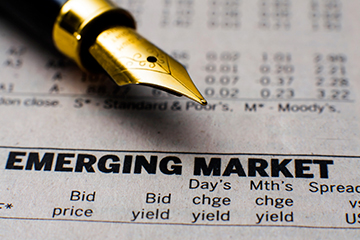Five myths about sustainable investing

Keytrade Bank
keytradebank.be
September 21, 2021
(updated January 31, 2024)
4 minutes to read
Myth 1: The purchase and management costs are higher with sustainable investing
If you buy sustainable products such as organic bread or fruit in the supermarket, you know that they often cost more than the 'normal' varieties. And this phenomenon is not something that is unique to supermarkets. Whether it is green electricity or not, an electric car or a petrol car, organic cotton or normal cotton, 'sustainable' usually means 'more expensive'.
Although that is often the case in the supermarkets or in your car dealer's showroom, sustainable investing is far more nuanced in reality. Sustainable investing does not necessarily mean investments have to be more expensive. That was primarily the case in the early years, however, when sustainable investment solutions were mainly offered by specialised asset management companies at above-average costs. Today, sustainable funds and trackers are everywhere you look and, when it comes to the issue of additional costs, there is no longer any question. The costs of ESG funds are usually even lower, as shown by research by Morningstar.
Myth 2: Sustainable investing is good for your values, but not for returns
One myth that comes up time and time again is that sustainable investing yields lower returns. If you think that sustainable investing always yields a better return than investments that do not fall under the sustainable umbrella, you'd be wrong. What you can say with a high degree of certainty, however, is that the returns on sustainable investments are generally not less favourable than those of traditional investments:
- In 2015, researchers analysed 2,200 studies, which showed no negative correlations between ESG investments and returns in 90% of cases (ESG stands for Environmental, Social and Governance; investment criteria that take into account people, the environment and society)./li>
- In 2019, Morningstar examined 56 ESG stock market indices and compared them to their non-ESG counterparts. They found that, since their launch, 73% of ESG stock market indices have outperformed their non-ESG counterparts.
- ESG investment funds outperformed the S&P 500 during the first year of the coronavirus pandemic, according to reports from S&P Global in April 2021.
Myth 3: Sustainable investing means not investing in tobacco and arms
Excluding controversial shares (such as those in gambling companies, arms manufacturers or oil companies) from your portfolio is one way to invest sustainably. Excluding certain sectors is often a basic strategy, but is far from the only way.
- Portfolio managers can also use a strategy called best in class. Companies with a higher ESG score are then preferred to others with a lower score.
- Another strategy is thematic investing, which involves investing in companies that benefit from certain sustainability themes, such as climate change.
- With impact investing, you strive for a positive impact on people, the environment and society in addition to a financial return.
- Activism is another way of investing sustainably. In doing so, shareholders enter into discussions with the management of a company to weigh up the sustainability policy. Shareholders also use their voting rights to support or block decisions.
Myth 4: Sustainable investing only works for shares
Investors traditionally focus more on shares than bonds when it comes to sustainable investing. One explanation for this is that bondholders do not have voting rights and, therefore, are unable to influence the sustainability policy. Another explanation is that, while bondholders may be able to enter into dialogue with companies, those investing in the huge market for government bonds are hardly likely to get government leaders on the other end of the phone. However, nowadays these arguments carry less and less weight. Just as with shares, an ever-increasing amount of ESG data is available for bonds to allow investors to make informed decisions.
Forecasts suggest that sustainable bond issues will break through the $1 trillion barrier in 2021. Green bonds also play an important role on the bond market. With green bonds, you invest in sustainable projects, such as loans for energy-efficient property, investments in public transport or bicycle infrastructure and the construction of wind farms. The market for both corporate and government bonds is rising sharply, as is the market for social bonds. Social bonds finance projects that benefit the population, such as investments in childcare or the care of the elderly.
Myth 5: It is all greenwashing
Companies have also become aware of the increasing popularity of ESG. Sustainability is a word that we like to use but, unfortunately, this means it sometimes gets used in the wrong way. The same applies to sustainable investing. Greenwashing, pinkwashing or bluewashing: it is not always clear how sustainable a sustainable fund or tracker really is.
A major challenge is the lack of common definitions. There are several rating agencies that measure a company's or government's sustainability, yet they each have their own set of ratings and their own philosophy. With such a broad range in the ratings themselves and the scoring criteria used, coupled with the interpretation of these data points, it is no surprise that some are sceptical when it comes to looking at ESG investments.
Fortunately, policy-makers in Europe have seen this, too. Since March 2021, financial products (such as investment funds) offered in the EU must be classified in one of these three categories: Non-sustainable financial products that do not have sustainability targets (as referred to in Article 6 of the European Regulation).
- Financial products with ESG characteristics that do not have specific sustainability objectives, but do take into account environmental, social or governance aspects through their investment policy, as referred to in Article 8. These products apply exclusion criteria and integrate ESG into their investment process.
- Sustainable financial products pursue a real objective in terms of sustainability, which means that they wish to have a positive impact on people, the environment and society (as referred to in Article 9).
Only products in the third category may therefore be referred to as 'sustainable'. This classification is a first step towards making the offer more transparent, but it is still not yet complete.
If you wish to know for certainty whether an investment offered with terms such as sustainable and ESG actually falls in line with your definition of sustainability, you should first go through the fund or tracker's investment policy. This information is available in the Key Investor Information Document, the prospectus and the latest periodic reports.


